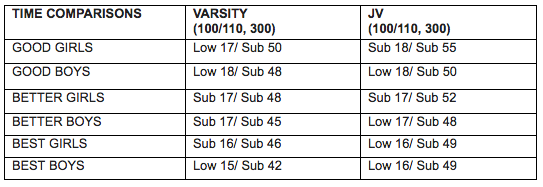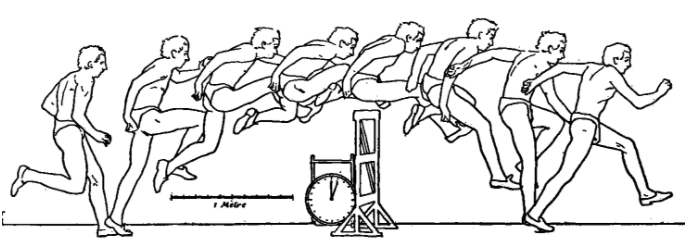Hurdles
Basic Philosophy
In order to obtain the optimal hurdling technique, one must first learn the proper running techniques, there’s a reason that the hurdles are considered running events, rather than jumping events. The ideal hurdler will basically run the 100 to 300 meters, while taking a long, gliding stride over each hurdle. The competitors will spend as little time in the air as possible. They’ll get their feet back on the ground quickly after clearing each hurdle, then will continue running with consistent strides so they can clear the next obstacle just as smoothly as the last.
In order to hurdle properly and not simply jump over it, a runner must adjust his or her hips to raise them over the hurdles. This involves the correct use of the lead leg, trail leg, and arm positions. The lead leg is the leg that goes over the hurdle first, and should remain fairly straight. Upon crossing over the hurdle barrier, the runner's lead leg snaps down quickly landing roughly 3 feet beyond the hurdle. The trail leg follows the lead leg. The trail leg drives forward at the knee (not swinging, as swinging causes the trunk to straighten up), and pulls through to maintain stride length. An effective trail leg will be parallel to the top of the hurdle and will be as close to the top of the hurdle as possible. The arm position is one of the most critical aspects that people often ignore. As the lead leg is being lifted over the hurdle, the opposite arm should drive straight out as if you are trying to touch your toes and snap back to a running position as the lead leg comes down. This helps with the runner's balance and rhythm throughout the race.
In the 100 and 110-meter hurdle events, the fastest hurdlers use the three-step technique. This means that three large steps are taken in between all of the hurdles. In order to do this efficiently, hurdlers must take long strides and maintain their speed for the entire race. To achieve the optimal speed for the 100 and 110’s (even the 300’s) blocks should be used and are highly recommended. The 100/110-meter hurdles are an all-out sprint to the finish, whereas the 300’s should be ran almost like a 400.
SOMETIMES IT BREAKS ME, BUT IT MAKES ME. IT'S WHO I AM. - anon


